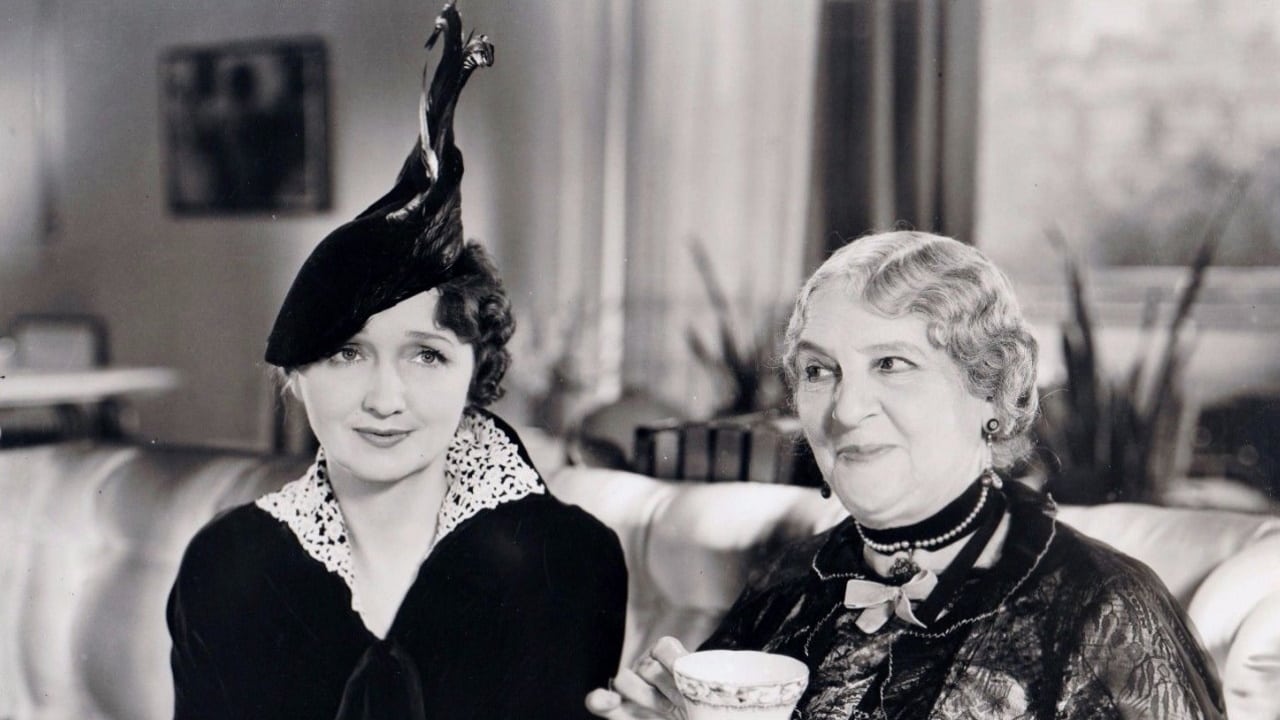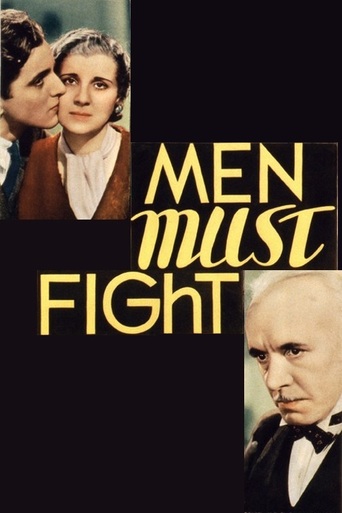

This is one of the few movies I've ever seen where the whole audience broke into spontaneous, loud applause a third of the way in.
... View MoreWhile it is a pity that the story wasn't told with more visual finesse, this is trivial compared to our real-world problems. It takes a good movie to put that into perspective.
... View MoreEasily the biggest piece of Right wing non sense propaganda I ever saw.
... View MoreMostly, the movie is committed to the value of a good time.
... View MoreWell Acted Prognostication and Warning About the Next "Great War". An Even Handed Dual Purpose Picture that Tries and Mostly Succeeds to Have it Both Ways.The Movie Starts in the Middle of WWI and Sets Up the Illegitimate Relationship of a Nurse and a Flyer Before it Leaps to 1940 and then Sets the Stage for the Beginning of WWII (remember, the Film was made in 1933) and the Clash Between Pacifists and Patriots.Noble and Notable as a Glimpse Into a Possible Future that Really Did Happen. The Film Also Manages to Foreshadow a Few Technological Advancements. Poison Gas was the Contemporary Horror and the Scariest Watch Weapon of the Period and it is Included Here Quite Forcefully. The Battle Scenes that Take Place Above the Air and In New York City are Chilling.Some May Consider the Ending a Lean Toward Pro-War, but there is Enough Anti-War Sentiment Throughout to Make This a "Fair and Balanced" Contrast of Philosophies. A Little Known Film that is a Gem of its Kind and is an Undiscovered, Utterly Thought Provoking Exercise of its Time and Any Time for that Matter.
... View MoreFor some reason, a lot of the reviewers on IMDb want to praise this mealy-mouthed pseudo-liberal talk-fest. Maybe this is because heroine Diana Wynyard makes a number of decent anti-war speeches throughout this film. In any event, I will admit Diana Wynyard is a good actress and did a good job in this film, and I appreciated the opening scene, a pre-code artifact indicating that Miss Wynward and Robert Young had engaged in pre-marital sex. However, although the writer of Miss Wynyard's speeches misses entirely some of the most salient points of the anti-war point of view:1. That war is often fought for the benefit of profiteers 2. That politicians goad nations to war by means of lies 3. That politicians, no matter what they say, generally seek empire when they go to war 4. That women, children, the sick, the poor, the elderly, and the disabled suffer the most when war is foughtThat a film described by some as anti-war misses these and other major points is akin to giving the Nobel Peace Prize to a world leader who bombs weaker nations and sends drone weapons against civilians. In fact, Miss Wynyard's character tends to trivialize the anti-war point of view by representing that point of view as a mere response to acute grief. NYC is attacked in this film, in an eerie foreshadowing of 9/11, but the film says nothing about the actions leading up to the attack, the motivations of the attackers, or whether or not US politicians knew in advance of the attack (as Pres. Roosevelt did in the case of Pearl Harbor, but was looking for a justification to enter WWII). War is represented then, not so much as the result of plans and actions and motivations, all of which should be deconstructed if we are ever to learn from history, but rather as a kind of Force of Nature, a unavoidable part of human experience, such as sex and love are. Hence the title. War as an expression of the human spirit. In case you still might think this film is anti-war (Spoiler Alert!) then consider the fact that at the film's end, Miss Wynyard's son resolves his story arc by enlisting to fight in a jingoistic crescendo of inanity.I'm busting on this film so bad because others in this time period knew the straight scoop on war. Graham Greene did, hence his classic 1936 novel 'This Gun for Hire.' Smedley Butler did, and he had already written the classic 'War is a Racket.' In terms of cinema, the Marx Bros 'Duck Soup' and Chaplin's 'The Great Dictator' are much more articulate regarding the subject of war and peace. Actually, 'The Shape of Things to Come' is also better on the subject as well. This film is mostly just a curiosity. It's eerie that it predicted the USA entering into a European war in 1940, and it's eerie that it showed an attack on NYC, it's got funky video-telephones for futuristic 1940, and it's got a hint of pre-code sex. But it's slow, talkative, and in the end fakes you out because you think the point of view is pro-peace, but in the end, it's just more cheer-leading for the War Machine. Like we need that.
... View MoreQuite amazing in its prophetic way. And how did they conceive of a telephone with a screen showing the person with whom you are speaking - back in 1933? Did they really believe we would have that by 1940? I thought I was seeing things.Ah, if only everyone could have taken this movie's message to heart between the two wars. I lost two cousins in WWI; my aunt lost all five of the fellows she dated in high school in Quebec. Her brother who did return was forever changed - he and his pal had taken a German officer into custody who was showing them his timepiece. Suddenly the officer pulled a small handgun and shot dead my great-uncle's friend. The family barely recognised Uncle Russell on his return.These stories continue today - never ending.Diana Wynyard is quite impressive. TCM showed three of her performances back-to-back this morning. Excellent casting. Read Ms Wynyard's bio on IMDb and found due to her death I just missed seeing her in 1964 in Ibsen's "The Master Builder" with Laurence Olivier when the National Theatre Company came to Oxford.
... View MoreA strange combination of political foresight, a moral philosophy debate and unchecked patriotic jingoism. This isn't a great dramatic film for a lot of reasons but is a great thought provoker. This film should be viewed in high schools and colleges precisely because it takes both side of the issue so strongly. For example, while the script blames the mother for making her son into a pacifist and goes about celebrating the men who go to a certain death defending their country, it lets the pacifist grandmother have the final word in the movie. The foresight about Nazi Germany and Imperial Japan's war plans is very chilling. It's also interesting that this was around the start of the US pacifist movement that some say was partially financed by Nazi Germany to keep the US out of their way.While the film is done in that creaky early thirties acting style, the script gives the characters quite a bit of nuance. By the end you can't tell what side the filmmakers were on. Almost all of the intelligent quotes come out of the pacifists but the US is attacked and thousands die because of them. The anti-pacifists frequently come off as very violent and crude. Triumphant military music plays when the troops march out and fly off.This film should be seen with the more entertaining but similar "Things To Come"Some technical notes: the sound is very bad at points during the last ten minutes on the TCM print which I assume came from the MGM vault. The destruction of the Empire State Building, which is very disturbing to look at these days, was ridiculous. It would have taken much more then the one dinky bomb that came off the enemy bi-plane.
... View More